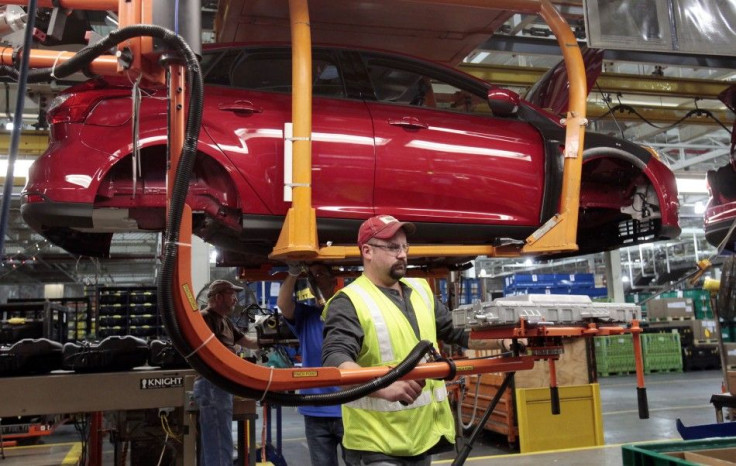U.S. GDP Growth Rate Forecast: 3% in Q4 on Consumer Spending, Q1 Likely Weaker

The U.S. economy is expected to have expanded in the fourth quarter of 2011 at a 3 percent annual rate, the fastest pace in a year and a half and well above third-quarter growth of 1.8 percent, as consumers loosened their purse strings, companies rebuilt inventories and housing construction perked up.
These U.S. gross domestic product forecasts, the consensus of economists surveyed by Thomson Reuters, bury for now any thoughts of a double-dip recession.
Four months ago, many economists were saying we are heading into recession, said Stuart Hoffman, chief economist at PNC Financial Services Group Inc. Instead, the fourth quarter turned around to be the strongest quarter of the year.
But such bullish sentiments may be short-lived. Some economists feel that economic growth in 2012 could fall back into the 2.5 percent range. By and large, the economy is going to be just treading waters as far as growth is concerned, said Sean Snaith, an economist at the University of Central Florida.
The GDP numbers, which offer a preliminary measurement of the economy's total output of goods and services, will be released by the Commerce Department Friday at 8:30 a.m. Eastern. More complete figures will be released in February and March.
More Consumer Spending
Consumer spending, which drives more than 70 percent of GDP, is anticipated to have increased at a 2.4 percent annual rate in the October through December holiday season after rising 1.7 percent in the third quarter, according to economists. The gain in consumer spending was supported by relatively robust job creation, lower savings rates and declining gasoline prices.
(Consumers) have vented some of that pent-up demand, said Snaith.
Employers added 412,000 jobs in the last three months of 2011, compared with 137,000 in the same year-ago period. The jobless rate dropped to an almost-three-year-low of 8.5 percent in December.
Households cut their savings rate -- the percentage of after-tax income that's not spent -- to 3.5 percent in November from 3.6 percent in October. The savings rate was consistently at or above 5 percent since late 2009, according to the Commerce Department.
The average price of regular unleaded gasoline at the pump decreased consistently in the fourth quarter, reaching a 10-month low of $3.20 a gallon on Dec. 20, according to AAA.
Housing Recovery
Perhaps the best news in the fourth-quarter GDP report will be the pickup in housing construction, which is a leading economic indicator. It's not huge, but it's better than it's been, said Richard Green, director of the USC Lusk Center for Real Estate.
Historically, residential investment has averaged roughly five percent of GDP, according to the National Association of Home Builders. But that figure fell to about 2 percent after the housing prices collapse five years ago. In the fourth quarter, it may have risen by another percentage point, which could add a percentage point to GDP, Green said.
After trailing for the first 10 months of last year, the number of housing starts in 2011 surpassed the previous year's total, mostly on the strength of multi-family starts. Housing starts in 2011 reached 606,900 vs. 586,900 in 2010. However, that is still about one and a half times below the average number of new homes started each year since 1959.
If you look at the business cycles going back to World War II, it's hard to see a lot of recovery (in the economy) if you don't see housing recover, Green said.
Sales of previously owned U.S. homes rose to an 11-month high in December and the supply of properties on the market dropped to a near seven-year low, according to the National Association of Realtors.
Rebuilding Inventories
Although businesses replenished their inventories in the fourth quarter after reduced stockpiles subtracted 1.4 percentage points from third-quarter GDP growth, the boost in inventories is likely to be transitory. Most businesses drew down their product on hand in the third quarter because they were wary about the stability of the economy. And with economic growth not yet robust or consistent, companies are not really going to continue to ramp up inventories accumulation, Snaith said.
Economists said that predicting the direction of the U.S. economy is difficult because the European debt crisis could ultimately derail U.S. growth prospects.
If governments default on debt in Europe, you might see credit freeze up again and if that happens, it will harm everything, including housing, Green said.
© Copyright IBTimes 2025. All rights reserved.






















